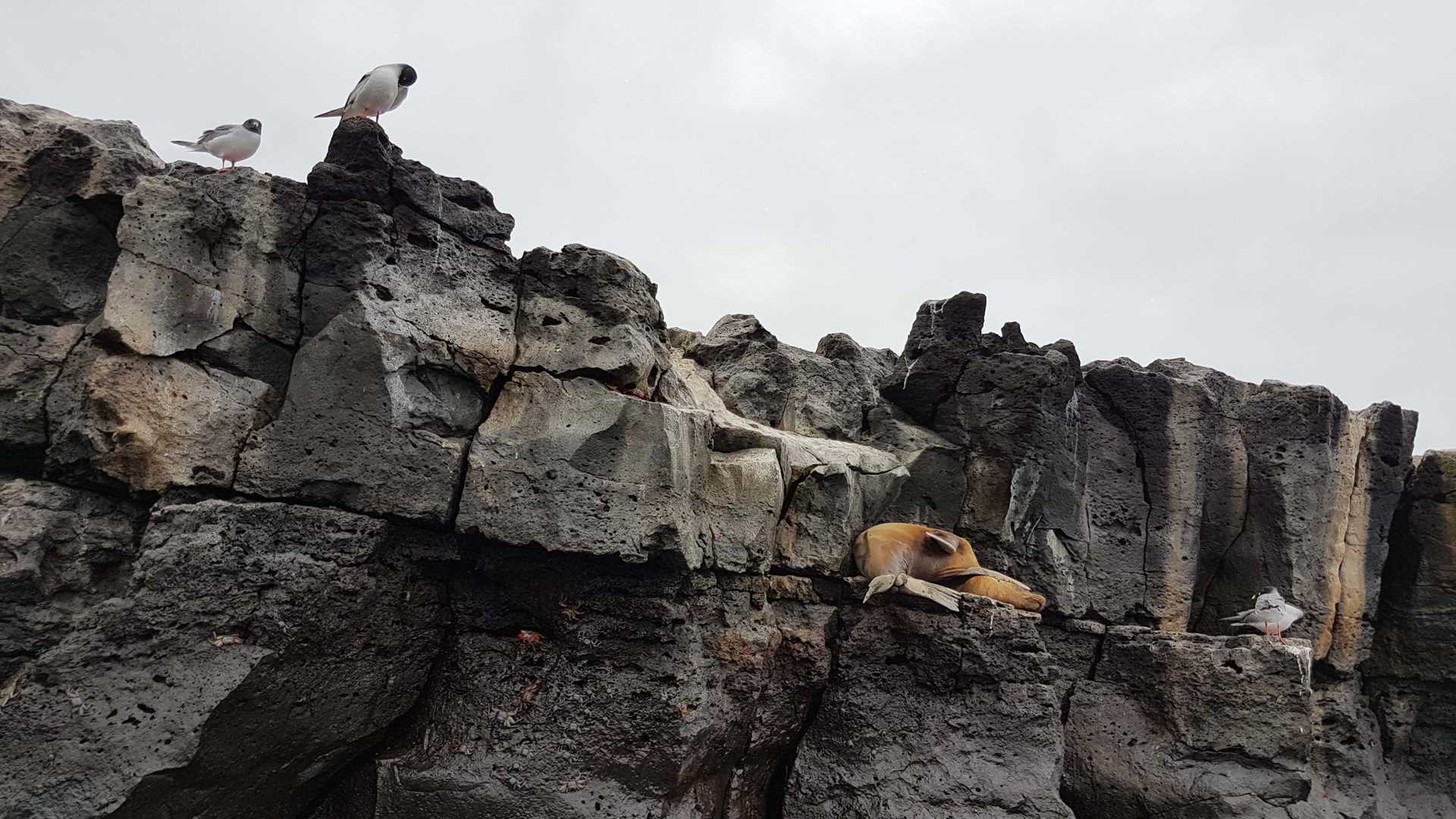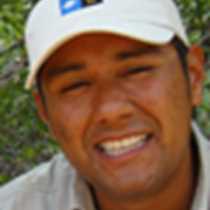Floreana Island this morning reminded us that we are just entering the rainy season here in Galapagos. Galapagos animals behave very different from the dry cool season to the warm wet one, and we saw many Pacific green sea turtles mating everywhere at this location. In a few weeks’ time, the whole archipelago is going to be bathed in warm water from the Panama oceanic flow, and the whole ecology of Galapagos is going to change as well. This means that in a few more weeks every single beach in Galapagos is going to be visited at night by female turtles laying their eggs. This is another good reason to protect the fauna and flora of our planet, because they are the best indicators of small changes occurring on our planet.
We continued with our morning activities at a small island known as Champion. This place is a satellite island offshore from the main island, Floreana. This is one of the two places where we can see the endemic Floreana mockingbirds in the wild. Conservation projects are working to restore the whole island, hoping someday we will have a chance to see these pretty little birds throughout the archipelago, like their ancestors before human impact. This is a very ambitious project that the Galapagos National Park is carrying on with the help of our dear visitors.
Later on we offered a chance to go snorkeling at this location. Champion is one of the best places to swim with pup sea lions, big aggregation of fishes, sea stars and small coral reefs still present in Galapagos.
After this amazing morning experience, we sailed for an hour to Post Office Bay, where we continued our adventure. This time we boarded our kayaks to explore a small group of little islet covered with Galapagos sea lions and an opuntia cacti forest, along with sea birds and migratory shore birds as well.
As the sun began to set, we made our way back to the National Geographic Endeavour, admiring the colorful sky as we jetted across the water. Our adventure continues tomorrow.







